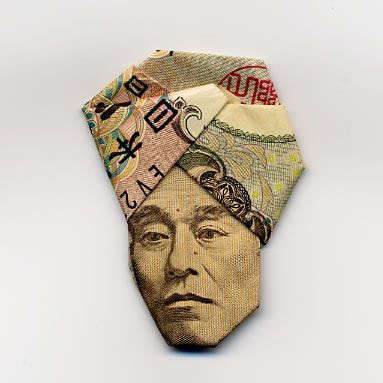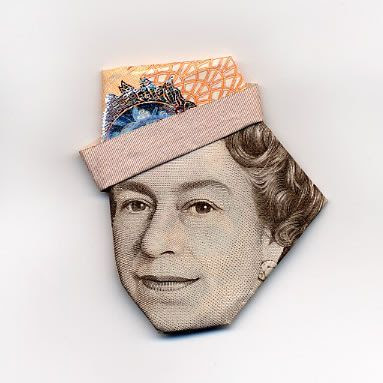Follow these guidelines and feel confident that you'll be making the right financial decisions.
1. For return on investment, the best home renovation is to upgrade an old bathroom. Kitchens come in second.
The return on investment on a mid-range bath modernization is 102% of its cost. Kitchens can add about 90% of their costs to the home's value.
Another home improvement that can pay off is window replacement. Not only does this job return about 90% on investment when the house is resold, it saves on energy bills every year.
As a rule, upscale improvements pay off at lower rates than mid-range or inexpensive ones. And making a house bigger and more luxurious that those of your neighbors will also cost a lot more than they'll return when the house is sold.
2. It's worth refinancing your mortgage when you can cut your interest rate by at least one point.
There are transaction costs and fees involved in any refinancing that must be either paid out of pocket or added to the mortgage principal. Some of those costs can be considerable. Title insurance can easily run into four figures and broker fees can be expensive as well.
Like many things in life, timing is everything here. Is your job likely to relocate soon? Will you need a bigger house in the next couple of years? Unless you're planning to stay in the home for a while, the benefits of a lower monthly bill may not be worth the additional expenses that refinancing generates.
3. Spend no more than 2 1/2 times your income on a home. For a down payment, it's best to come up with at least 20%.
Many buyers in recent years have stretched the limits of affordability, and have bypassed the traditional 20% down model. But make a smaller down payment, and most lenders will require you to have private mortgage insurance (PMI), which adds a minimum 0.5% of the loan amount to your mortgage payments, about $1,000 more a year on a $200,000 principal.
4. Your total housing payments should not exceed 28% of your gross income. Total debt payments should come in under 36%.
These guidelines include payment on all loans, such as school and auto loans and credit card debt.
Also remember to take into account other home-related expenses to judge a house's affordability. Property and school taxes, home insurance and energy costs and requirements can vary considerably around the nation.
Try to estimate future maintenance costs and work them into your budget. Some homes, especially older ones, may require more regular upkeep than homes built with more modern materials. Roofs, siding and heating, cooling, plumbing, and electric services may have to be replaced within a few years of purchase.
5. Never hire a roofer, driveway paver or chimney sweep who is going door to door.
Even if these contractors aren't scam artists, they may lack licensing and insurance. If a worker gets hurt on your property it could wind up costing a lot more than you bargained for.
Instead, get contractor recommendations from friends, neighbors or relatives. Check references and get documentation of insurance coverage.
And don't put more than 10% down for the job. Mete out the payments gradually as work is done and withhold the final 25% until you're satisfied with the completed project.
6. All else being equal, the best place to invest is a 401(k). Once you've earned the full company match, max out a Roth IRA. Still have money to invest? Put more in your 401(k) or a traditional IRA.
One of the keys to saving for the long run is keeping as much money as possible shielded from taxes. A 401(k) gives you that and more: You also get an immediate tax break, because contributions come out of your paycheck before taxes are withheld. And there's the possibility of a matching contribution from your employer – that's free money.
The federal limit on annual contributions has been increasing gradually, and is $15,000 in 2006. If you're 50 or older, you may contribute an additional $5,000.
With a Roth IRA, you get no immediate tax break, but withdrawals in retirement will be tax-free. You can make at least a partial contribution to a Roth if your modified adjusted gross income is less than $110,000, if you're single, or less than $160,000, if you're married and filing jointly.
7. To figure out what percentage of your money should be in stocks, subtract your age from 120.
Since 1926, stocks have returned an annual average of 10.5 percent, long-term government bonds returned 5.1 percent, and "cash," measured by Treasury bills and other short-term investments, has returned just 3.1 percent. In other words, if you're investing for the long-term, stocks are the place to be. But in the short term, the stock market can be downright dangerous, with much more severe drops than the bond market has.
That's where this rule comes in - the younger you are, the more time you have to recover from stock-market crashes. As you get older, you should gradually move money out of stocks and into bonds.
8. Invest no more than 10% of your portfolio in your company stock - or any single company's stock, for that matter.
In a bear market, it's tough to find a safe-haven – a lot of the stocks in your portfolio will be sinking too. But don't compound the risk by holding too much in any one stock.
The most recent dramatic example of just how serious this "specific-stock" risk can be is Enron, which imploded after its executives allegedly engaged in various acts of malfeasance. But a company with perfectly honest management might fall on hard times too.
And if it's your employer's stock, you're in an even worse position – not only will your portfolio be decimated, but your job could be at risk too.
9. The most you should pay in annual fees for a mutual fund is 1% for a large-company stock fund, 1.3% for any other type of stock fund and 0.6% for a U.S. bond fund.
Running a mutual fund isn't free – companies have to pay for research, managers' salaries, and so on. Those costs are borne by the investors in the funds and get deducted from returns. A percentage point here and there may not sound like much, but a fund manager needs to pick a lot of great stocks to make up for those costs.
10. Aim to build a retirement nest egg that is 25 times the annual investment income you need.
So if you want $40,000 a year to supplement Social Security and a pension, you must save $1 million. This rule is based on the amount that you can safely withdraw from your nest egg in retirement.
The single most effective thing you can do to ensure that your money will last is to start out with a low withdrawal rate of 4 percent, then raise that amount annually to compensate for a cost-of-living increase or inflation.
The reason is that if a bear market hits early in retirement, an enormous loss can put such a big dent in the portfolio that it won't be able to recover in time to benefit when the market rebounds.
11. If you don't understand how an investment works, don't buy it.
There is no shortage of investment products out there. In addition to stocks and bonds, there are exotic hedge funds and insurance products.
Fortunately, you don't have to try and make sense out of them. In fact, you can construct a sensible portfolio with just two index mutual funds – one stock and one bond.
To reach your goals, you don't need to shoot for spectacular returns. Individual investors can outpace the market with moderately above-average returns in good times, as long as they don't lose too much money in bad times.
12. If you're not saving 10% of your salary, you aren't saving enough.
The earlier you start saving, the less you'll need to set aside every year to meet your goals. That's because you allow your money more time to grow -- the gains on your invested savings will build on the prior year's gains. That's the power of compounding, and it's the best way to accumulate wealth.
Saving at least 10% of your annual salary for retirement is recommended, but the older you start saving, the more you'll need to save. If you start at 50, you may need to put away 30% a year and still postpone retirement by a few years.
13. Keep three months' worth of living expenses in a bank savings account or a high-yield money-market fund for emergencies. If you have kids or rely on one income, make it six months'.
An emergency fund is a hassle to build, but you'll be glad you did next time your transmission sputters or your boss hands you a pink slip. Besides curbing spending where you can and setting aside a small amount of your pay every two weeks, there are several ways to build your cash cushion. Some sources to draw on:
- A bonus or financial gift from a relative
- Money you get back from a flexible spending account, a transportation reimbursement account or an insurance claim.
- An extra paycheck. If you're paid every two weeks, you'll get 26 paychecks a year. So in some months you'll get three instead of two. If your fixed monthly expenses don't change, you might be able to set aside one paycheck a year.
14. Aim to accumulate enough money to pay for a third of your kids' college costs. You can borrow the rest or use some of your income to help out when your child is in college.
Most parents have trouble saving enough for their retirement. But they still want to help their children pay for college.
In the struggle to feed your 401(k) and your child's 529, the 401(k) should win out. That's because there are no scholarships for retirement and your children have a lot of funding options, including financial aid, loans and a job. They also can go to an excellent, but less expensive school.
And when they're in college, if you have some extra cash after contributing to your retirement accounts, you can help them pay some of their expenses with it.
15. You need enough life insurance to replace at least five years of your salary – as much as 10 years if you have several young children or significant debts.
Life insurance lets surviving family members maintain something close to the standard of living they enjoyed prior to you or your spouse's death. Stay-at-home spouses also should have life insurance, since they do all sorts of things that you would need to pay someone else to do in their absence.
There are two types of policies:
- Cash-value: These cover you for your entire life and includes an investment component.
- Term: These cover you for a specific period of time and provide a death benefit only.
For most people the choice is a no-brainer - the premiums on a term policy are much lower.
16. When you buy insurance, choose the highest deductible you can afford. It's the easiest way to lower your premium.
It's the open secret of the insurance game: File a claim, your premiums go up. For that reason, it's in your interest – as much as possible – to shoulder small damages out of pocket.
For home insurance, raising your deductible from $500 to $1,000 could save you 25% on premiums, according to the Insurance Information Institute.
17. The best credit card is a no-fee rewards card that you pay in full every month. But if you carry a balance, high-interest rates will wipe out the benefits.
If you carry a balance, you may pay a variable interest rate as high as 19%. And if you've been late with payments or used up too much of your credit limit, you may be hit with a penalty rate, which can run north of 30%.
Credit card penalty fees, meanwhile, have been on the rise for years. The average late fee in 2005, for example, was $34, up 162% from $13 in 1995, according to the Government Accountability Office. Over-the-limit fees, meanwhile, were $31, up 138% from $13 during the same period.
So no matter how many airline miles or cash back rebates a no-fee rewards card offers you, it won't be enough to compensate you for your very expensive credit card habit.
18. The best way to improve your credit score is to pay bills on time and to borrow no more than 30% of your available credit.
It also helps to pay off debt rather than moving it around because the ratio of your credit card balance to your credit limit is key.
Say you owe a total of $2,000 on four credit cards, each of which has a $2,000 limit. Your total credit limit is $8,000, of which your total balance ($2,000) accounts for 25%.
If you transfer all your balances to two cards and cancel the other two, your total credit limit is reduced to $4,000, and your $2,000 balance now accounts for 50% of that limit.
Also, don't open new accounts when applying for a loan if possible.
19. Anyone who calls or e-mails you asking for your Social Security number or information about your bank or credit card account is a scam artist.
The scam artist's goal is to steal your money, steal your identity or both. In fact, don't carry anything with your Social Security number on it, and don't offer it to anyone unless it's for tax, employment or credit purposes.
There are other ways scammers and identity thieves can get your valuable financial information – for instance, by hacking into a merchant's system and lifting your (and hundreds of other customers') debit card pin numbers.
So be sure to monitor online bank and brokerage accounts a few times a week, and if you see any suspicious withdrawals or charges, report it to your financial institution.
20. The best way to save money on a car is to buy a late-model used car and drive it until it's junk. A car loses 30% of its value in the first year.
Don't believe your father's old-fashioned warnings about buying used. Buying a "pre-owned car" means you've let someone else drive those expensive early miles.
Do your research, of course, and look for a reliable model. But today's cars can generally be expected to rack up six-digit odometer numbers before experiencing major mechanical breakdowns.
Check ConsumerReports.com for detailed reliability information. Sites like Edmunds.com and Kelley Blue Book's KBB.com can help you narrow down the price you should pay.
21. Lease a new car or truck only if you plan to replace it within two or three years.
Keeping a car at the end of lease-term can cost you thousands more than it would have to simply have bought the car from the get-go.
Leasing does have its place, but it's not right for most people. If you're absolutely certain you don't want the car long-term, leasing keeps your monthly payments low. That's because the payments are based on the actual value the car loses during the time you're driving it. Instead of making payments then getting some money back when you trade the car in, as you do when you finance a purchase, with a lease you just don't pay that money out to begin with.
22. Resist the urge to buy the latest computer or other gadget as soon as it comes out. Wait three months and the price will be lower.
As with cars, electronics cost the most for those who must be first with the latest cool thing. Let the gadget freaks get their fill, then go shopping when the market has calmed.
Also, those first-in-line buyers can have the fun of discovering the annoying bugs, disappointing features and poorly designed interfaces. You can check the user reviews on C-Net and Amazon.com later to find out for yourself without having spent the money.
23. Buy airline tickets early because the cheapest fares are snapped up first. Most seats go on sale 11 months in advance.
Airlines would love it if every passenger would reserve their seat as far in advance as possible. That way, they'd always know how many flights they actually need for each route. So they make it as attractive as possible for people to book early. To punish procrastinators, ticket prices get higher as take-off gets closer.
Up to a point, at least. In the end, the airline just wants to fill every seat. So, if there are a few seats left open at the last minute, you can sometimes find a bargain deal. If you really have to fly, though, don't count on that. Airline bean counters have gotten pretty good at knowing just how many seats they need.
24. Don't redeem frequent flier miles unless you can get more than a dollar's worth of air fare or other stuff for every 100 miles you spend.
You typically need 25,000 miles for a domestic round-trip ticket. If the ticket costs less than $250, you're probably better off paying cash.
Airlines push redeeming miles online and will charge $5 to $15 to speak to a person. But it may be worth it: the airline representative has access to additional inventory on partner airlines.
Your miles stretch further on international flights, which typically require 40,000 to 60,000 miles or more depending on the destination. You want to aim to get $2 worth of airfare for every 100 miles. In other words, for a $1,200 flight to Paris, you'd be getting your money's worth using 60,000 miles.
25. When you shop for electronics, don't pay for an extended warranty. One exception: It's a laptop and the warranty is from the manufacturer.
Most electronics, like PDAs and MP3 players, have few moving parts that are prone to wear. If there's anything defective, you'll probably find out about it within the first few months.
Laptops, on the other hand, have parts like hard drives and big screens that can actually fail over time. Plus, laptops can cost thousands of dollars to replace.
 Moneygami is origami made from banknote; the subtle genius lies in the way the artist incorporates the prints on the money bills into the facial characteristics of the finished figures.
Moneygami is origami made from banknote; the subtle genius lies in the way the artist incorporates the prints on the money bills into the facial characteristics of the finished figures.








